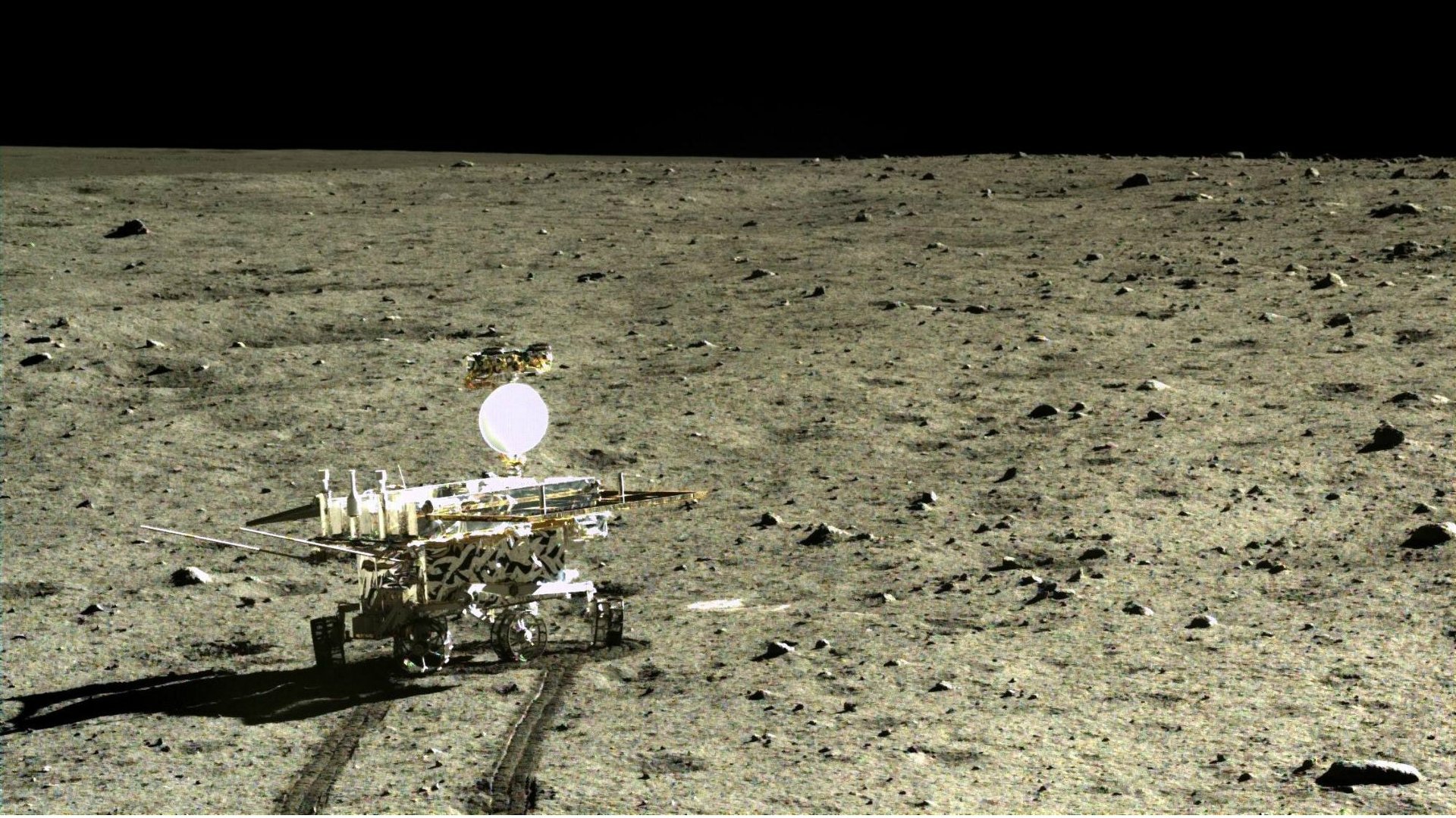China’s “Jade Rabbit” rover found a new kind of moon rock
China’s Yutu lunar rover, a gold unmanned space craft also known as the “Jade Rabbit,” has discovered a new kind of moon rock.


China’s Yutu lunar rover, a gold unmanned space craft also known as the “Jade Rabbit,” has discovered a new kind of moon rock.
The rock, a basalt from lava that likely flowed about 3 billion years ago, shows different iron oxide and titanium levels from those found by previous Soviet and US missions to the moon four decades ago, according to a Dec. 22 study in Nature Communications led by planetary scientist Zongcheng Ling. Unlike earlier samples from the moon’s surface, which were either high or low in titanium, the newly discovered basalt shows intermediate levels, implying that the moon is made of more diverse stuff than scientists previously thought.
“Our analysis indicates that this young lunar mare region has unique compositional characteristics, and represents a new type of mare basalt that has not been sampled by previous Apollo and Luna missions and lunar meteorite collections,” wrote Ling and his team. “The CE-3 landing site and in situ analyses of the rocks and soils derived from the fresh crater near the landing site provide key new ground truth for some of the youngest volcanism on the Moon.”
Bradley Joliff, a scientist at Washington University of St Louis who also worked on the report, told the Guardian he and his team will be able to use the discovery to extrapolate about the moon’s history.
“The diversity tells us that the Moon’s upper mantle is much less uniform in composition than Earth’s” said Joliff. “And correlating chemistry with age, we can see how the moon’s volcanism changed over time.”
It’s a nice victory for the Jade Rabbit, which has had a bit of a rocky run since landing on the moon’s surface in December 2013. It has struggled through mechanical troubles and extreme cold, and even been declared dead. Although the rover cannot move, it’s far from dead, continuing to collect data, photographs, and a healthy following on the Chinese microblogging site, Weibo.